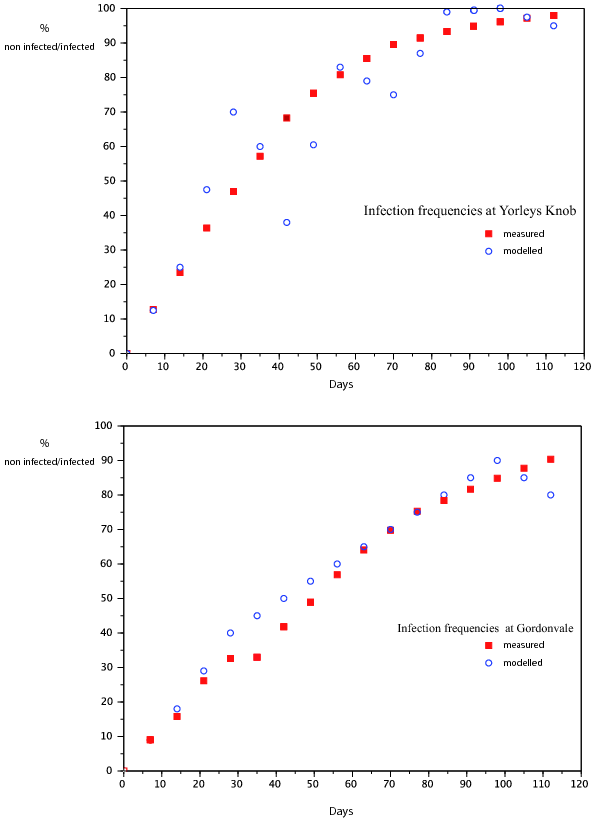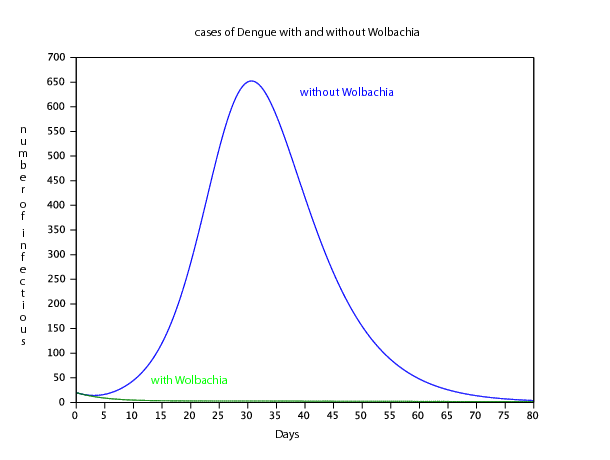Section: New Results
Release of Wolbachia as a preventive action against dengue
We have designed a model of infection by Wolbachia of a Aedes aegypti population, to take into account the biology of this infection and also the data that can be obtained. The objective is to use this model for predicting the sustainable introduction of this bacteria. We provide a complete mathematical analysis of the model proposed and give the basic reproduction ratio for Wolbachia . We observe a bistability phenomenon. Two equilibria are asymptotically stable : an equilibrium where all the population is uninfected and an equilibria where all the population is infected. A third unstable equilibrium exists. We are in a backward bifurcation situation. The bistable situations occurs with natural biological values for the parameters. Our model is an example of an epidemiological model with only vertical transmission.
This infection model is then connected with a classical dengue model. We prove that for the complete model the equilibrium with Wolbachia for the mosquitoes and without dengue for the human is asymptotically stable. We prove that, if a sufficiently great population of infected mosquitoes is introduced, dengue will disappear.
We use the data of a real trial of releases of infected mosquitoes in Cairns (Australia) to calibrate our model. Our model behave remarkably well versus the observed data. We use then the calibrated model to simulate different scenarii of appearance of dengue. We use a pessimistic situation where the basic reproduction ratio of dengue is . The simulations confirm our findings, dengue epidemics does not occur, and show that the introduction of Wolbachia is a promising way of control dengue.



